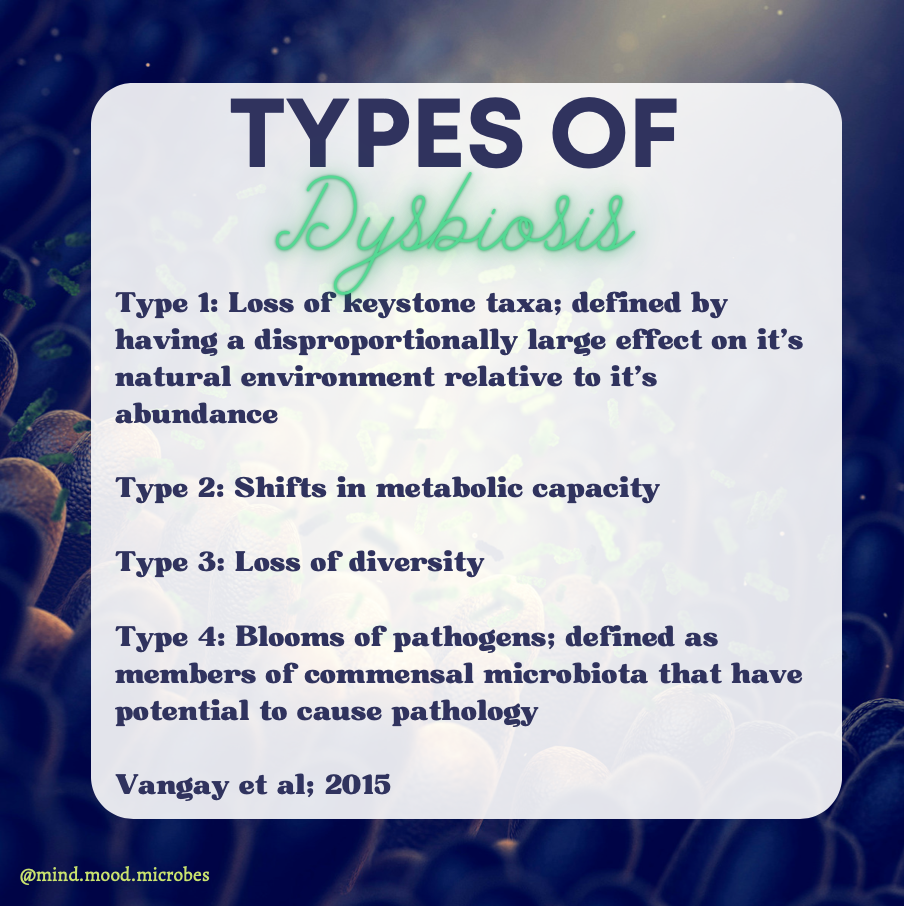Dysbiosis vs. Healthy Microbiome
Is there a single healthy microbiome model we can look to? No there is not. A healthy microbiome will vary according to diet, environment, geographical location, stress levels, medical history and more. That, said we know about patterns that are characteristics of either a healthy or dysbiotic microbiome.
The 4 Characteristics of a healthy microbiome include:
Moderate alpha-diversity levels: so how many different species of microbes do you carry within your microbial ecosystem?
Stability: so how much or little does your microbiome fluctuate? Is it easily perturbed
Mostly anaerobic: are the majority of your microbes intolerant to oxygen?
Metabolically capable and healthy: how well are your microbes able to metabolize food, nutrients and the items. Do they do so in a way that promotes metabolic health for you?
Dysbiotic is the word we use to describe an unhealthy microbiome. Dysbiosis meaning imbalanced or altered state of microbiome.
There are at minimum four types of dysbiotic microbiome profiles: (which may also overlap)
Loss of keystone microbes; defined by having a disproportionately large effect on the environment relative to it’s abundance.
Shifts in metabolic capacity; no longer able to keep up with metabolic demands. Includes low production of butyrate, for example.
Loss of Diversity making the environment prone to blooms and instability.
Blooms of pathogens; defined as members of commensal microbiota that have potential to cause pathology.
Overly high diversity contributing to instability.
Not metabolically friendly to the host; perhaps promoting metabolic disorders, shifting epi-genetics and more
What is the most common type of Dysbiosis?
“Perhaps the most consistent and robust ecological pattern observed during gut dysbiosis is an expansion of facultative anaerobic bacteria belonging to the phylum Proteobacteria. ”
So when assessing someone for Type 4 Dysbiosis we should be checking for overabundance of Proteobacteria. Per Dr. Hawrelak’s definition this group should be below 4% of the total Phyla.
Proteobacteria include Escherichia, Shigella, Salmonella, Helicobacter, Vibrio, Yersinia, Pseudomonas, Campylobacter, and Desulfovibrio. These microbes are harmless at low abundance, but in the context of an imbalanced ecosystem, can expand and cause issues when the environment becomes particularly suitable for their growth. (Remember Quorum Sensing?)
One environmental factor that can lead to an expansion of Proteobacteria is oxygen. Most Proteobacteria are facultative anaerobes, meaning that, unlike their friends Bacteroidetes and Firmicutes, they can survive and reproduce in the presence of oxygen. This gives them a competitive advantage over beneficial obligate anaerobes in an environment that contains oxygen.
How would oxygen get into the gut? We’ll have to cover that in a separate post!
Are you looking to learn more about the microbiome? Check out our new mini-courses Microbiome 101 and Microbiome Diversity!

